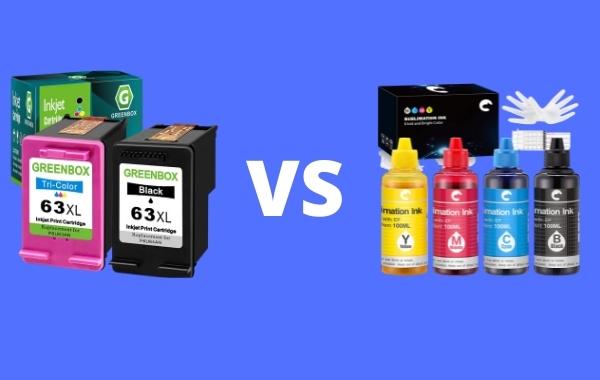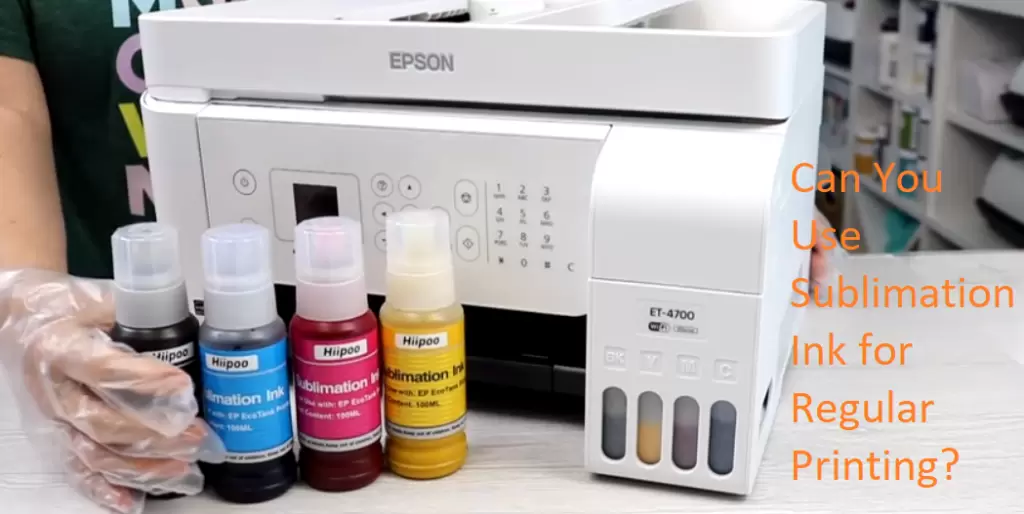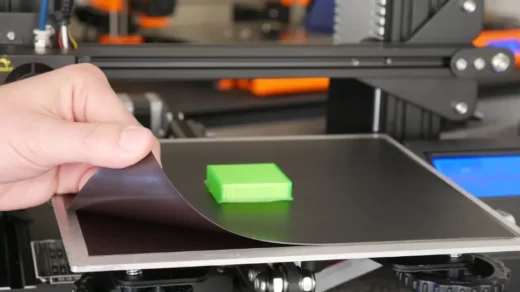Sublimation printers using sublimation inks have always been one of the most important pieces of equipment needed to run a design and printing business. Of course, it is well known that when printing with sublimation ink, it is best to use sublimation paper. But what if you don’t have a sublimation paper? Can you use sublimation ink on plain paper? In short, the answer is no
Regular printing with sublimation inks is not a good idea. The reason is that the chemical composition of sublimation inks is different and requires a sheet of paper as a temporary carrier before the ink is transferred to another surface. Use plain paper only to absorb sublimation ink.
Table of Contents
What Is Sublimation Ink?
When it comes to design and printing businesses that often use textiles as a primary material for their designs, one of the most important things these businesses know is to invest in a good sublimation printer that uses sublimation inks instead of the regular inkjets used in regular printers ink. But what exactly is sublimation ink?
Sublimation ink is ink whose chemical properties are different from ordinary dye inks. The difference is because sublimation inks are designed for sublimation. In physics, sublimation is the process of converting a solid into gas while essentially bypassing the liquid state.
This means that sublimation inks are instantly converted into gases when transferred to textiles and other similar surfaces. This process allows the ink and entire design to transfer without any cracks or issues. Sublimation paper is often used to facilitate the transfer process.
When you want to design with sublimation ink, you first need to print the design onto paper using a sublimation printer. From there, heat and pressure are needed to transfer the design from the sublimation paper to the final product.
Sublimation paper or transfer paper is basically there to facilitate the transfer of the sublimation ink on the surface of the final product which is what it was designed for. What happens is that the paper should only be used as a temporary carrier, as the use of a heat press facilitates the transfer, allowing the ink to move from the paper to the final product.
How is Sublimation Ink Different From Regular Ink?

The world has made progress in various fields, bringing new ways of human life. Many people make a career by printing on objects. Therefore, individuals have many questions about printing programs and printing resources.
Ink is the most important component in sublimation printing and conventional printing. People are now wondering if conventional printing with sublimation inks is possible. The point is what is the difference between sublimation ink and standard ink?
T-shirts, photos, and other overlays are printed with sublimation ink. The basis of using ink is to pressurize the ink into a gas that effectively adheres to paper, shirts, or other objects.
However, using ink in conventional printing is a unique process. Damage can occur when you try to print with a conventional printer. So be careful when using sublimation inks and use a printer that is compatible with them.
Can Sublimation Ink Use As a Regular Printing
Now that you know what sublimation ink is, it requires the use of paper as a temporary carrier for the ink, does that mean any kind of paper can be used for sublimation? Can you use plain paper instead of sublimation paper?
The answer is true no, when you use sublimation ink, you cannot substitute plain paper for sublimation paper. The reason here is that the regular copy paper we design for printers doesn’t handle sublimation inks like sublimation paper. In a way, when you end up transferring the design to a shirt or any other material, what’s happening here is that plain paper doesn’t do the best job.
When printing with sublimation inks, the paper can only be used as a temporary carrier until the design is transferred to the final product. This means that the paper shouldn’t absorb too much ink.
So if you use plain paper, which is usually very absorbent, what happens is that only a portion of the sublimation ink is transferred to the final product through the sublimation process. This is because regular copy paper picks up too much ink and prevents the ink from being released through sublimation. This will result in a poor design that lacks the color depth and detail you might want your design to have.
There is also the fact that sublimation inks are not dark enough to print until the sublimation transfer is complete. Using sublimation ink on plain paper will make the design look flat and light. This is a sublimation process that will bring out the color of the design. But in fact, normal paper absorbs ink very well, and the ink transferred by sublimation won’t be as good as you’d hope.
Reason Sublimation Ink Is Not Considered Good for Regular Printing

There are several reasons why sublimation inks are not suitable for normal printing. Let’s look at the main reasons why sublimation cannot be used for inkjet or normal printing.
- The first point is that sublimation inks are converted from precise methods to produce good results. Because sublimation is a way of converting a solid into a gas without going through a liquid stage, using sublimation inks on plain paper can damage the product or cause your desired designs to look less vivid.
- Another problem is that most standard printer processes and features do not support printing with sublimation inks. Sublimation ink is unique in that it cannot be used with any printer or printing technology. Because printing with ink on a conventional printer will not produce any results.
What Printers Are Compatible With Sublimation Ink?
Sawgrass manufactures sublimation printers that are most compatible with sublimation inks. However, Epson does have the Ecotank and WorkForce series that can be converted into sublimation printers. Because of Epson, many people ask “Can you sublimate with an inkjet printer?”.
Fortunately, “yes”. Inkjet printers can be retrofitted at home or with the help of an expert. However, there are four main types of inks for inkjet printers: dye-based inks, pigment-based inks, sublimation inks, and photo inks. These four basic ink types allow you to analyze which inkjet printer you have and what features it can offer.
- Dye ink is mainly used in home inkjet printers because it is cheap and good enough for normal printing. Still, dye inks will fade over time and cannot be used to print photos.
- Pigment-based inks are mainly used in office inkjet printers because they have a longer lifespan than dye-based inks and can be used to print photos.
- As for sublimation ink, it has the longest life and can last forever. However, sublimation inks are very expensive compared to dye or pigment-based inks. Also, only certain types of inkjet papers are compatible with sublimation inks.
- Finally, photo ink is often used in digital cameras or printers because it produces high-quality images and photos.
There are some other Epson inkjet printers that make a good sublimation as well as regular printers. However, regarding the sublimation conversion, we explain some considerations in “How to Convert an Epson Printer to Sublimation”. Make sure to read the value before converting. Also, printers using sublimation inks cannot be converted back to regular printing.
Conclusion
While sublimation ink is an interesting way to start printing, it most likely won’t work with your printer. So, you may not be able to print conventionally with sublimation inks, but it is possible. We hope you now have the answer, can you do regular printing with sublimation inks.








